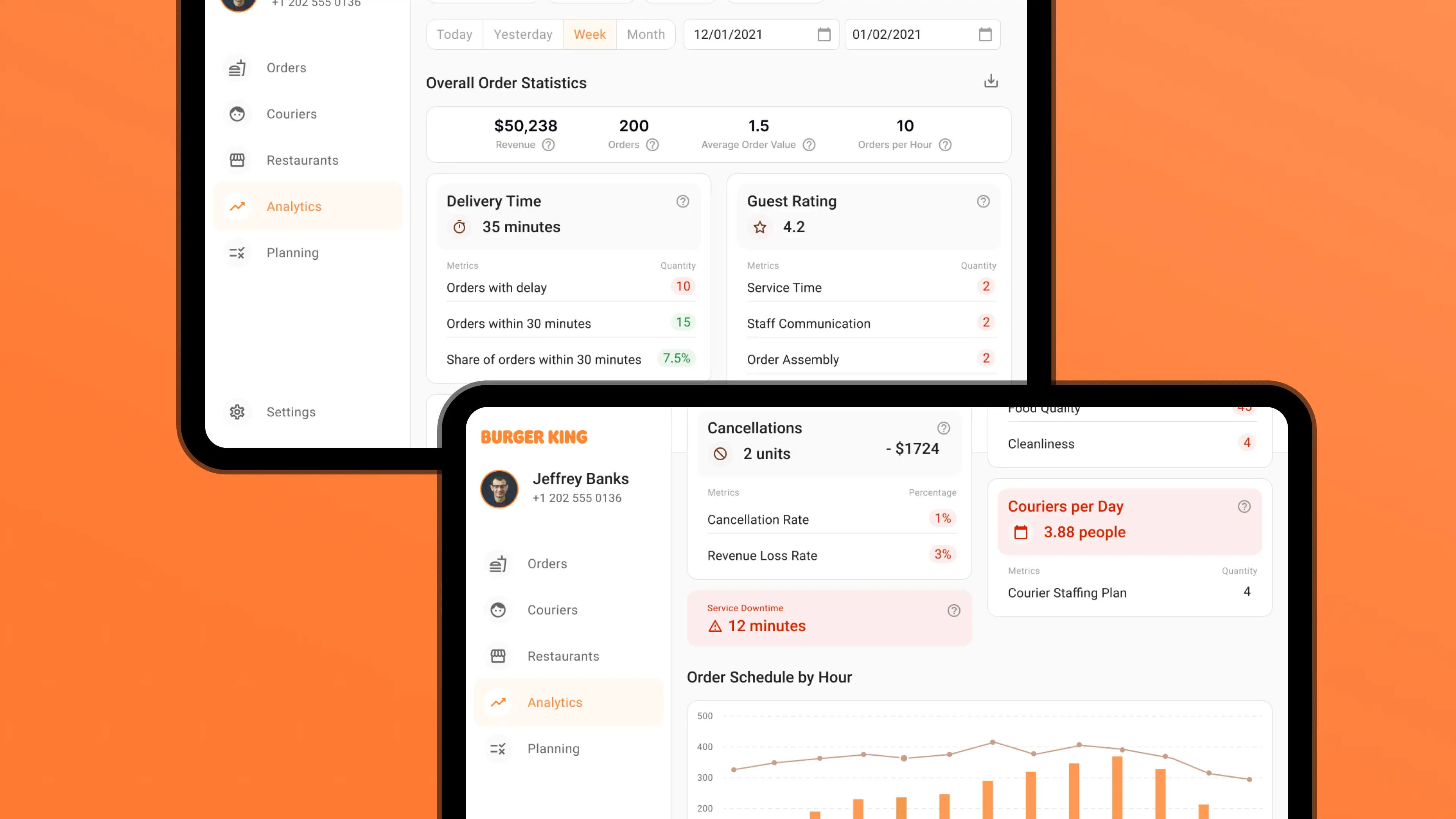A food delivery system for customers, delivery drivers, and restaurant chain managers
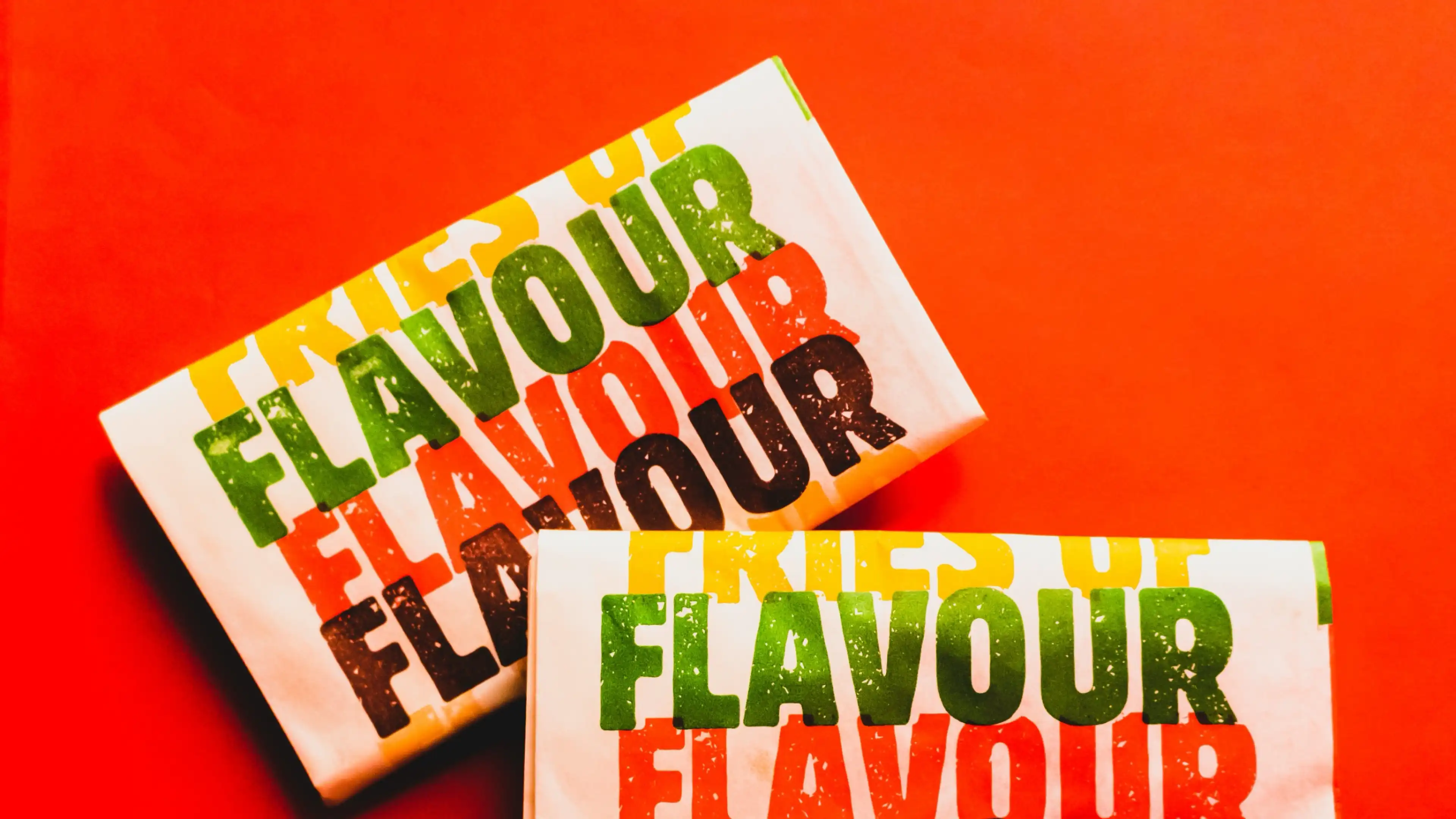

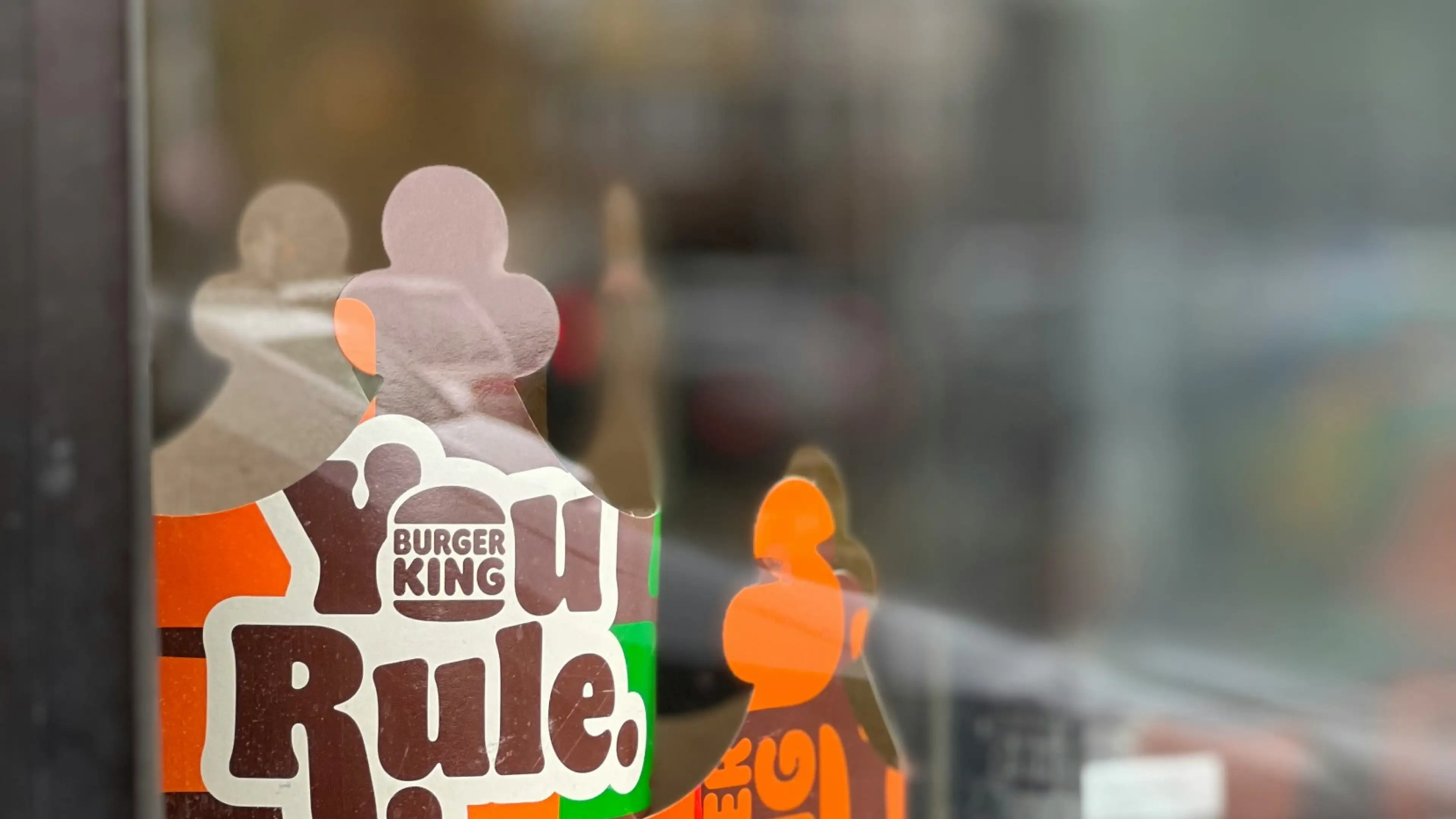

The task
Our goal was to develop a flexible and reliable system that would connect users, delivery people and the restaurant together. It needed to be able to handle a large number of orders and withstand peak load hours.
For this, we have built:
- An ERP system for order distribution and tracking.
- An app for Burger King delivery drivers.
- A convenient monitoring and management panel for restaurant managers, restaurant chain administrators and top brand managers.
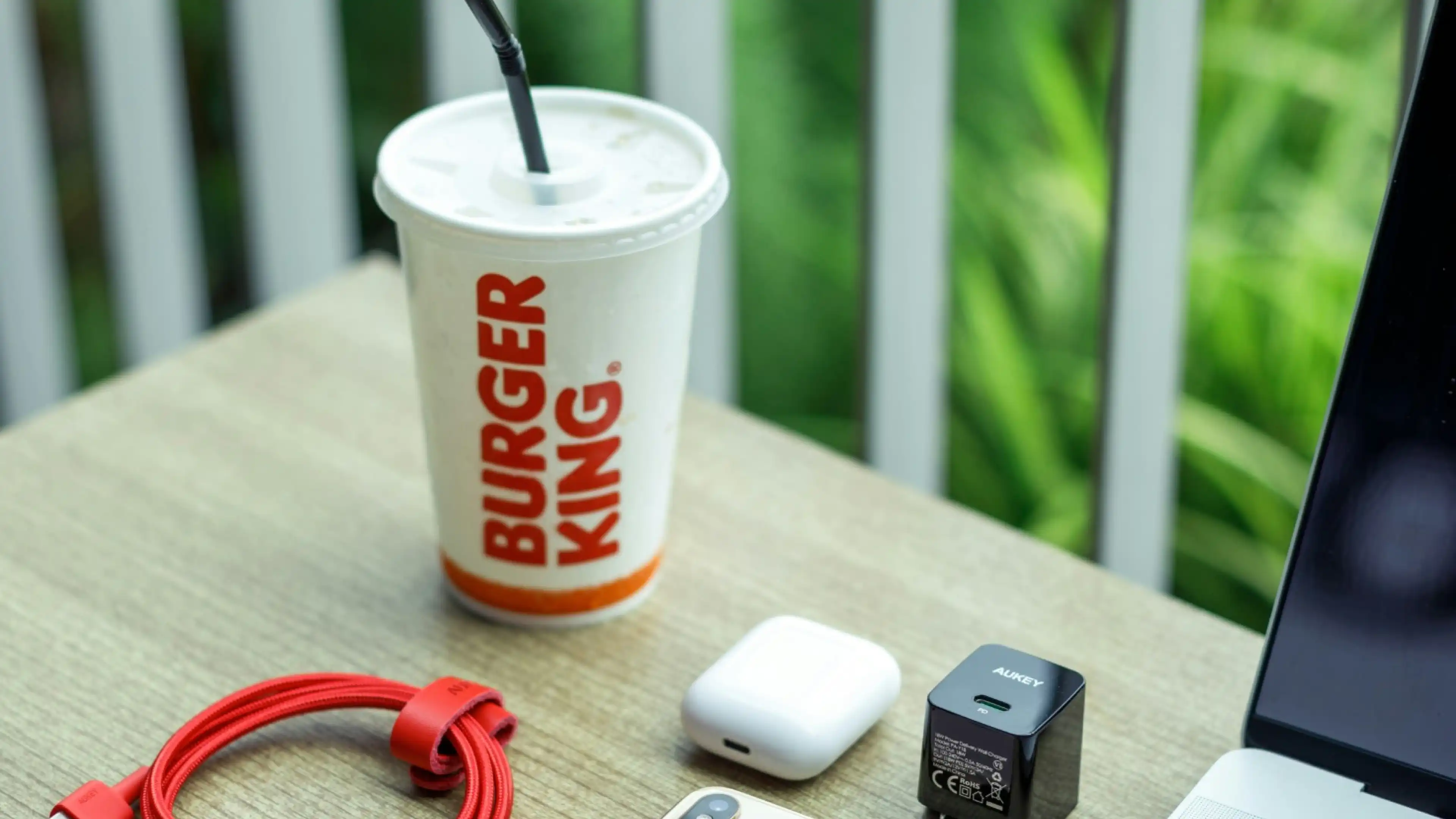

The solution
We designed a complex technical solution with a three-level role model, dashboards, and flexible tools for configuration and automatic order distribution.
The core value of this system is the fact that it can provide the best solution to any logistical challenges: it automatically calculates the fastest way to deliver the order to the customer and how to use minimal business resources when doing so.
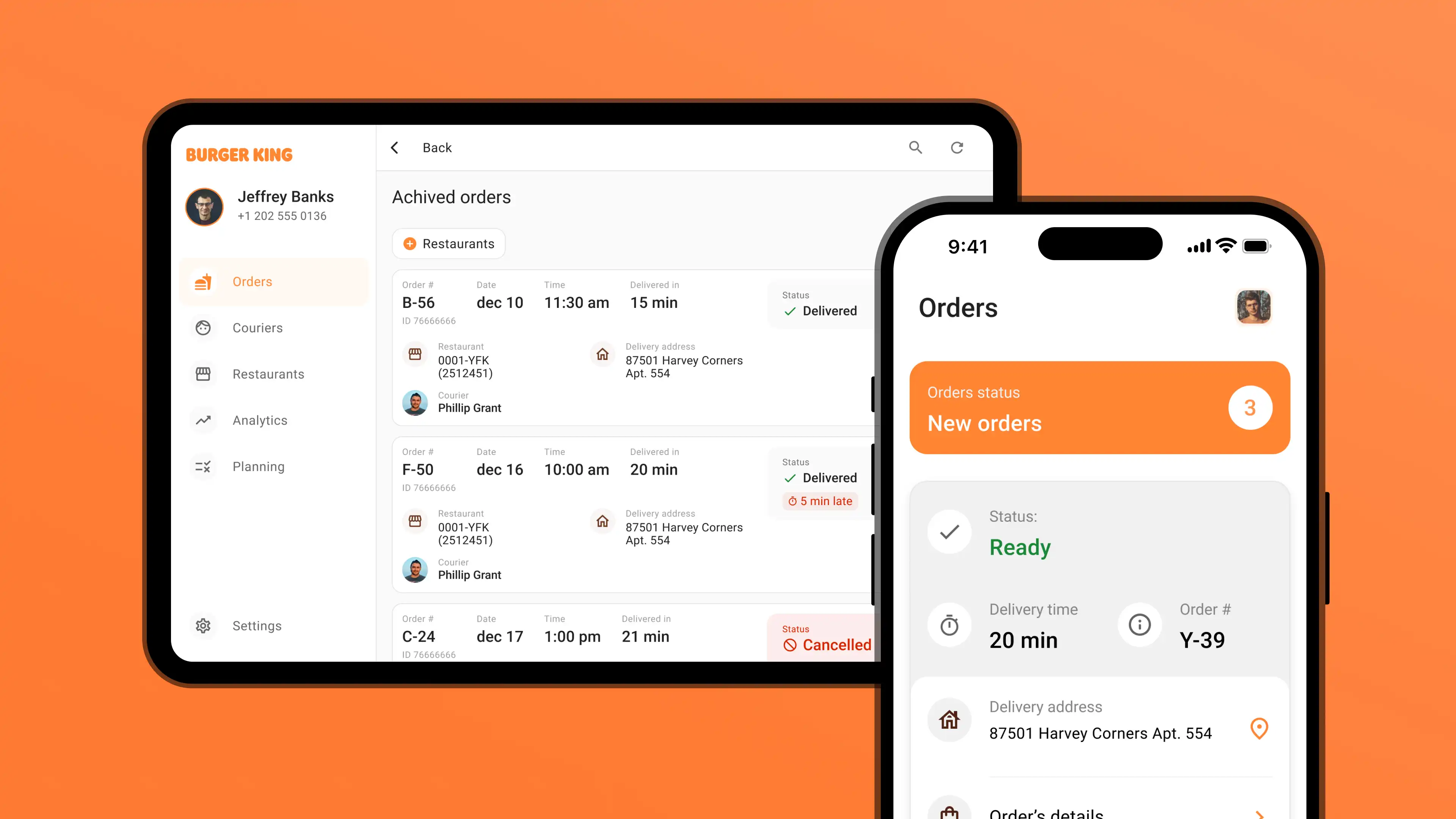

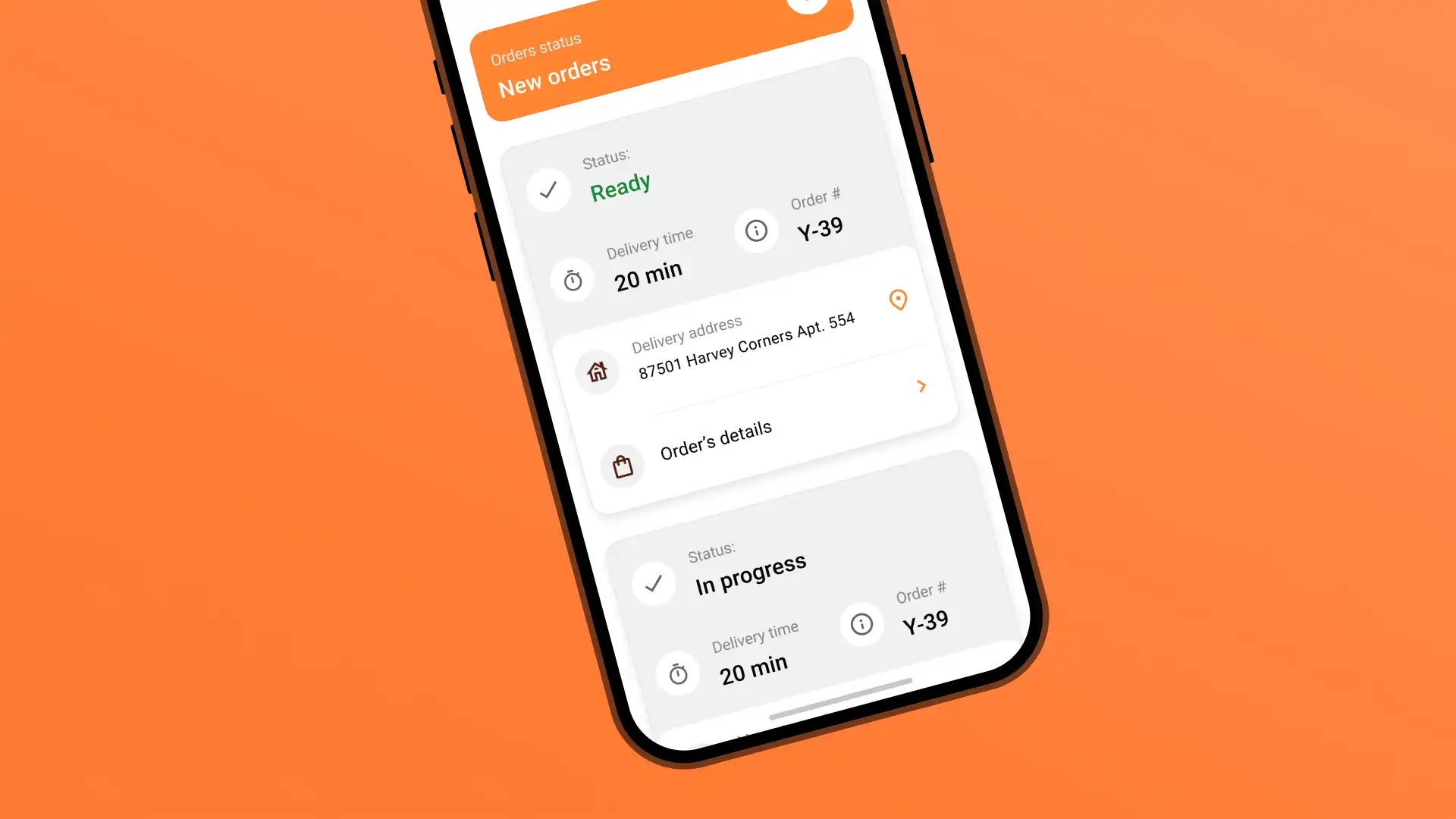

A mobile application for delivery drivers
The manager can register new drivers in the app and fill in their personal data. Then, the newcomer only has to sign in to their account.
You can log into the app using a PIN code, Face ID or fingerprint identification. Delivery drivers receive notifications about new orders with the address and time of delivery. They can accept or reject orders, stating the reason for the rejection, as well as pause their shift for lunch time.
The app shows a set of different statistics to the driver:
- All of the orders for the day — their cost, addresses, details, and delivery times. There is also information on how many of them were accepted, completed, rejected, or delivered with delay.
- A personal rating that is based on the number of completed orders and the average delivery time.
- The average customer rating and the strong points they noted - such as speed of delivery, politeness, accuracy, etc.
- The amount of money earned this month.
Simple navigation and design help drivers quickly get used to the interface, so they can start using the app on the go right away.
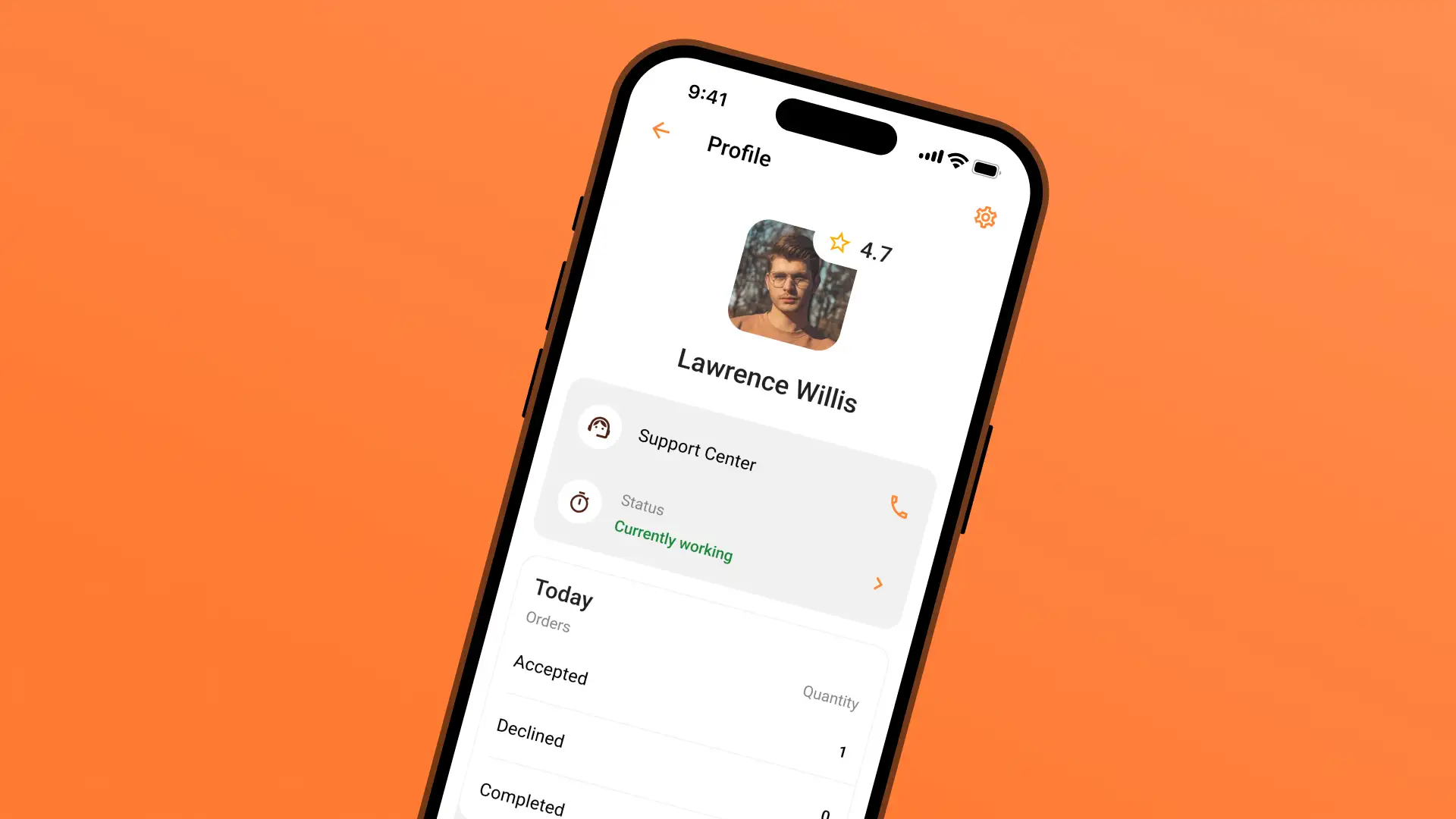

Location tracking
The app tracks the delivery person’s location as they get around the city. Based on this geographic information, the system is able to:
- Calculate the approximate delivery time. The app notifies the driver with a message: "5 minutes left" when the estimated time is almost up. If the time has run out, the message changes to "Hurry up".
- Display the location of the driver to the customer in the app from which they had placed their order — Burger King or delivery aggregator platform.
- Prioritize delivery drivers. The system firstly assigns the order to the driver who can complete it the fastest.
- Efficiently distribute resources. If there are not any new orders in the area where the delivery driver currently is, and there is a lot of them in the nearby zone, the app will send the driver to the restaurant in that nearby area.
- Organize a multi-order. The system combines orders from neighboring locations and assigns all of them to one delivery person.
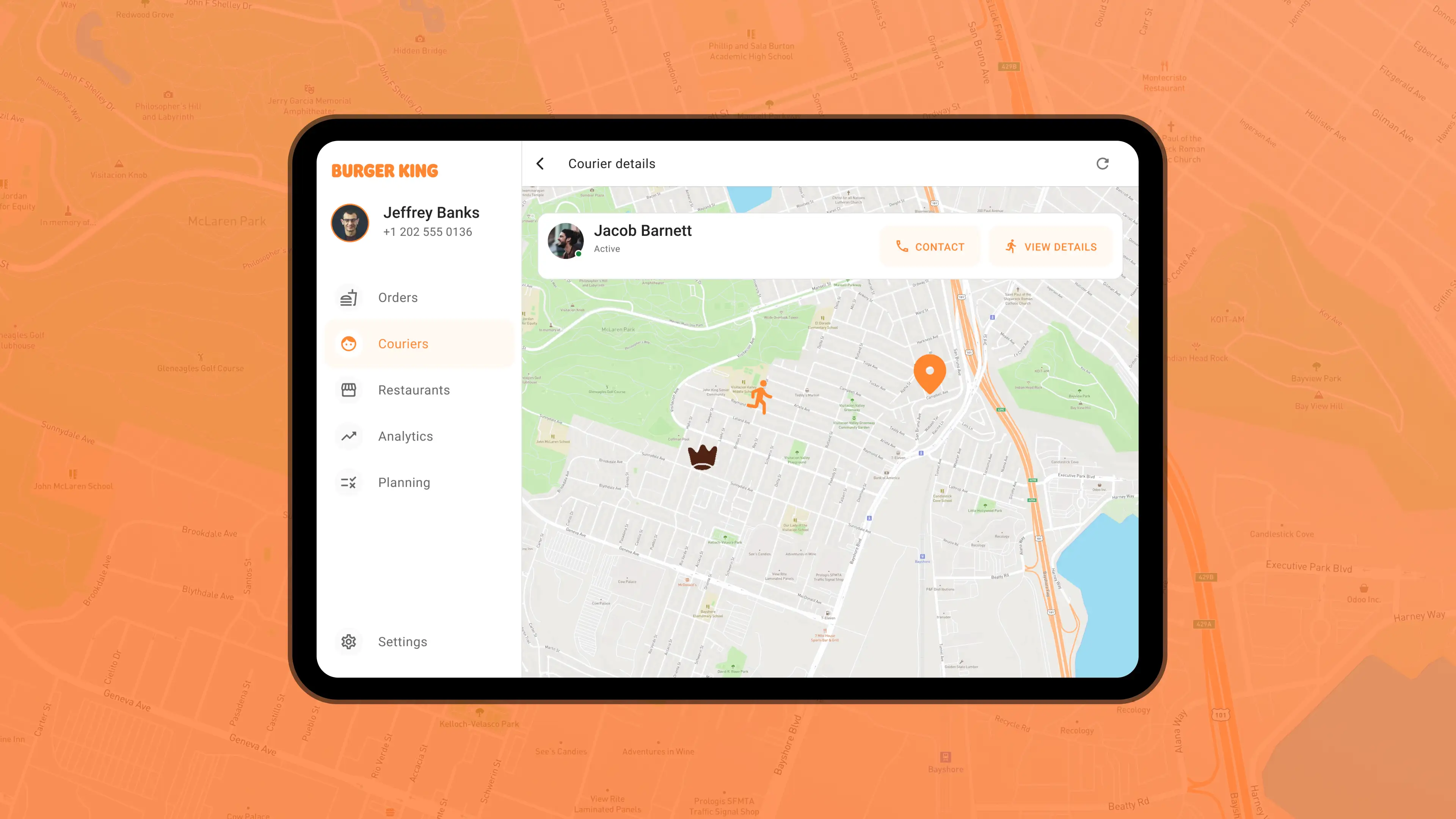

An admin panel for restaurant management
This is an ERP system for restaurant managers, restaurant chain administrators, and super administrators along with the back-office. All of them can use the system on their own level with the help of flexible dashboards.
Restaurant Managers
Managers can change the settings at the level of the restaurant they manage: for example, they can adjust the working hours or pause taking orders if the power goes out. A restaurant manager is also able to view the list of all delivery drivers that are assigned to their restaurant.
Administrators
Administrators can work in the system at the chain level. They are able to view all of the restaurants that belong to their chain in the city. In the panel, an administrator can also manage the orders and drivers, as well as determine the delivery areas of individual restaurants.
The order distribution system operates automatically, but the administrator can manually make some changes. If the delivery driver is really late or the customer cancels their order, the administrator needs to find out the circumstances, reassign the order to another driver and figure out a suitable compensation for the customer. In case the order needs to be delivered to a house next door to the restaurant or to its parking lot, the administrator can call off the driver and simply send one of the restaurant’s employees to hand out the order.
Super administrators and the back-office
This level is intended for top managers and business owners. There are analytics tools that allow super administrators to evaluate the efficiency of the logistics system as a whole. For example, here are some of the business metrics they can view by region:
- The average delivery time and cost.
- The ratio of orders completed by their own drivers to deliveries executed via aggregators.
- Statistics on delivery drivers.
